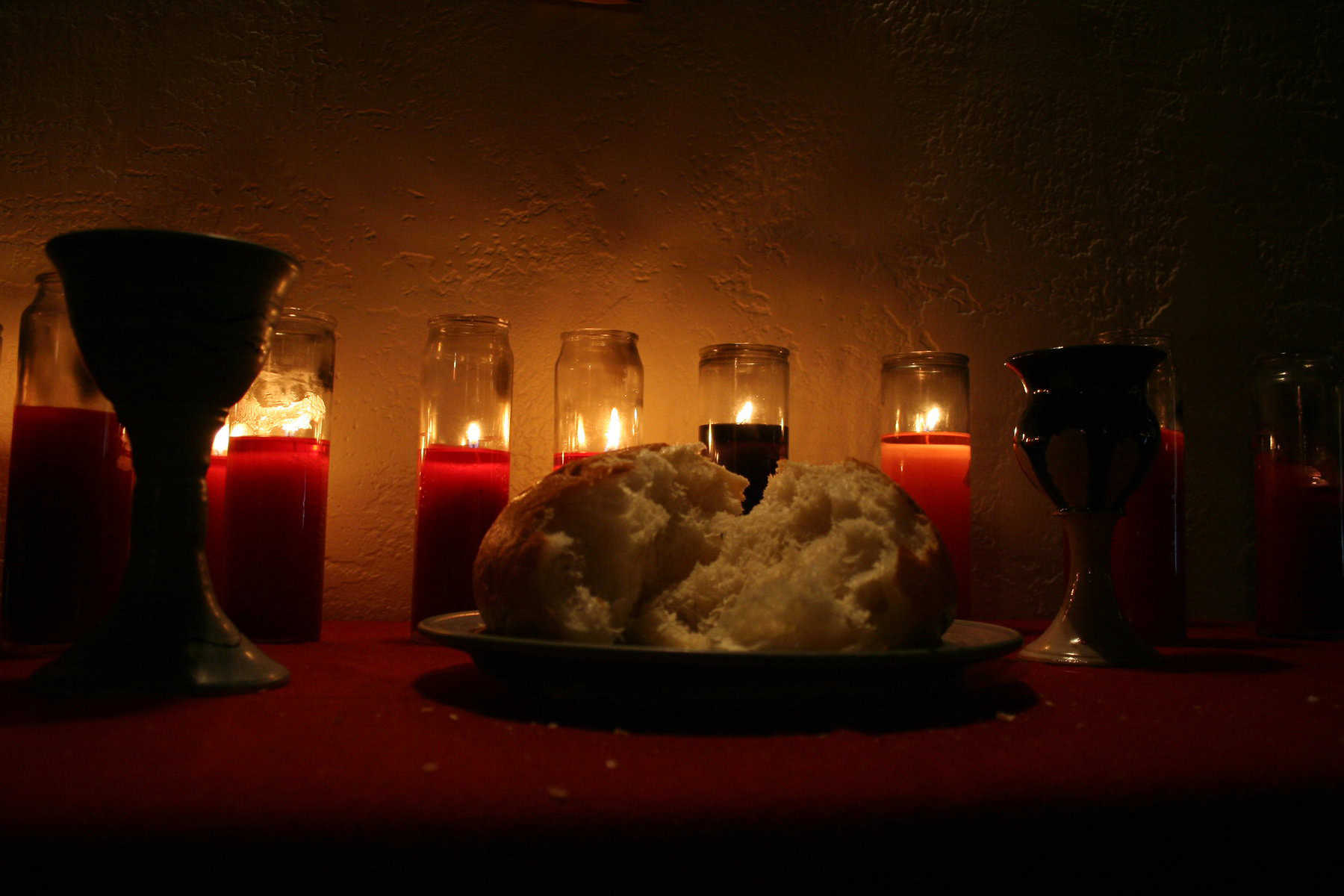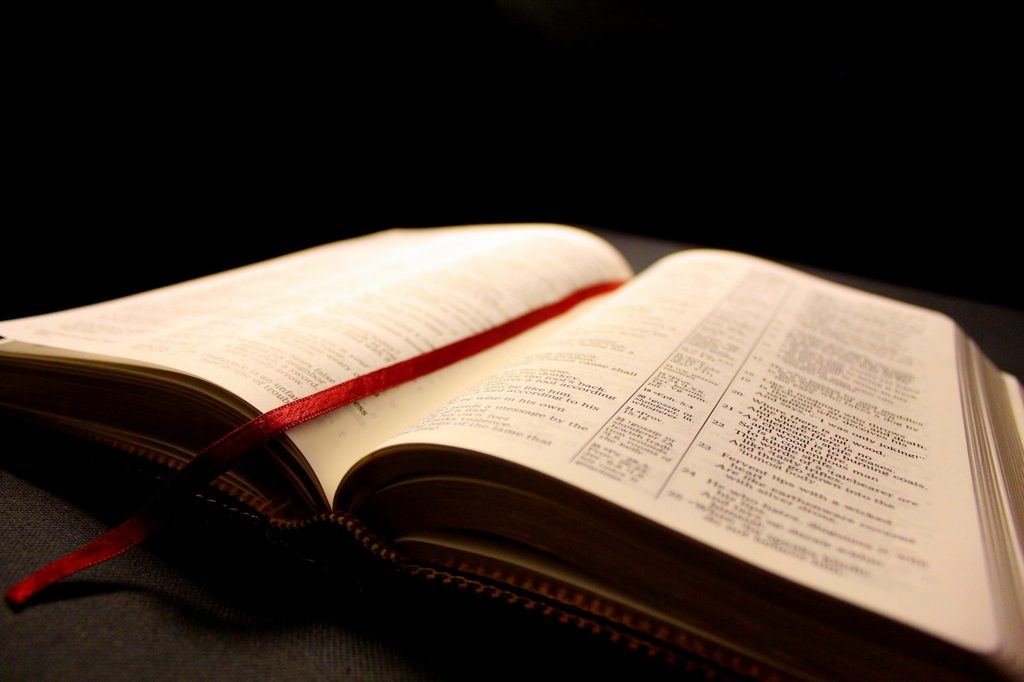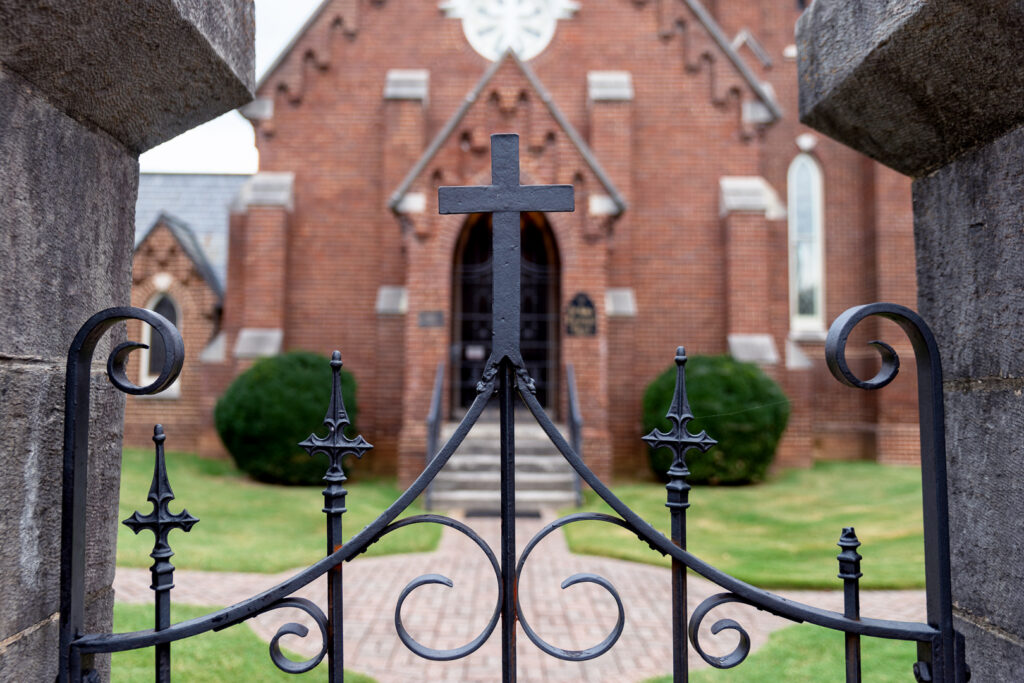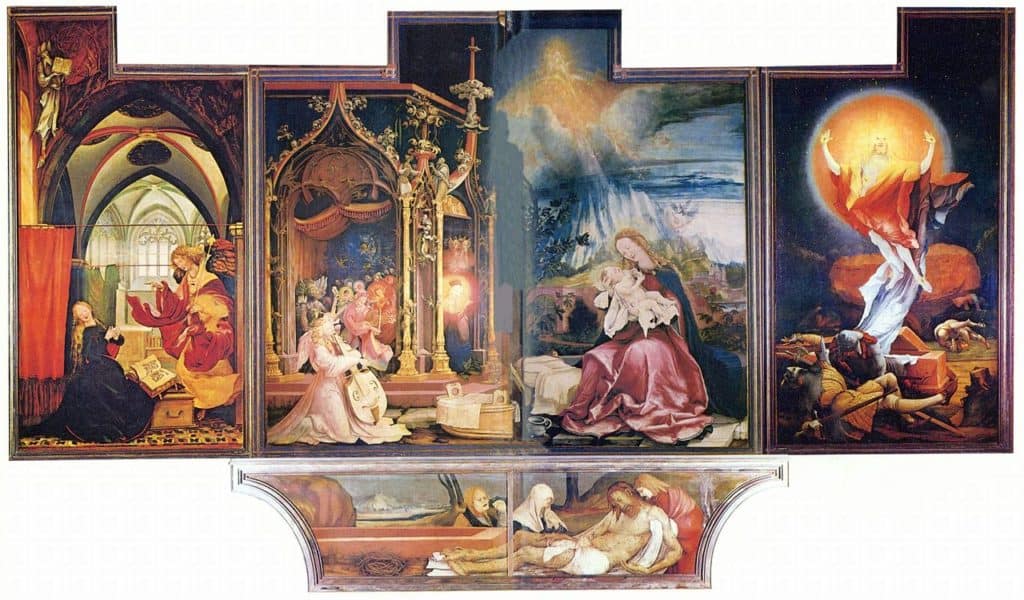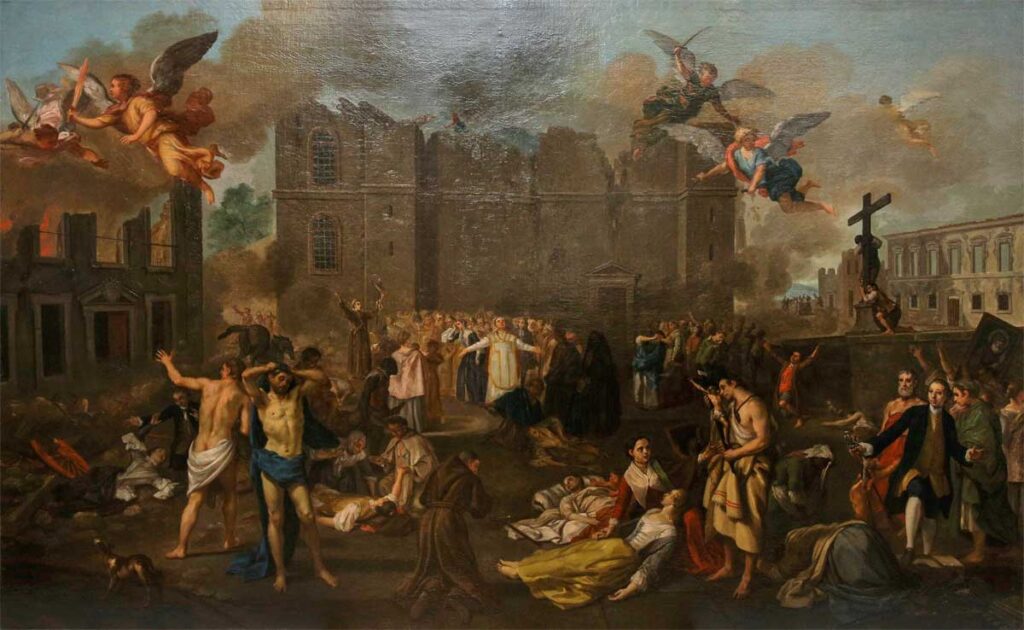As a general concept, Communion refers to the relationship among members of a tightly-knit group or association of people. In the Greek New Testament, St. Paul often used the word ‘koinonia’ or a word rooted in koine- to refer to this relationship. When St. Jerome translated the New Testament into Latin, he translated it into the word ‘Communio.’ When translated into English, this word often means ‘fellowship,’ ‘sharing,’ ‘participation,’ and ‘communion.’
The Significance of Communion in Christianity
The concept of communion lies deep at the very heart of central Christian doctrines. It describes the relationship among the persons of the Trinity, God in Father, Son, and Holy Spirit; the relationship between God and saved humanity in the Church, chiefly represented in the person of Christ and the sacrament of communion; and the relationship among members of the Church as a sign or mark of authentic fidelity to the teachings of Jesus and the presence of the Holy Spirit among them. This article will explain, in turn, the concept of communion in each of these theological contexts and how the communion of the Trinity serves as the archetype, exemplar, and goal of love. The communion of persons in the Trinity forms the vocation of the Christian to love God and neighbor as the Father and the Son love (Holy Spirit) one another, the proper effect of love.
The Communion of the Trinity
A Communion of Love
In the first letter of John, he wrote, “Whoever is without love does not know God, for God is love” (I John 4:8). The concept of God as love reigns foundational for beginning to understand the Christian doctrine of the Trinity.
An essential Old Testament doctrine states that “God is one” (Deuteronomy 6:4), a novel profession during ancient times since polytheism saturated ancient society. One of the central professions of the ancient Hebrew faith, evidenced by the traditional emphasis placed upon the ‘shema’ made it paradoxical, to say the least, that God would reveal Himself through Christ to be a Trinity—Father, Son, and Holy Spirit (cf. Matthew20:18-19). These seemingly opposed propositions of faith, pitting Monotheism against a Trinitarian understanding of God, get resolved by early Christians through a conception of communion that while they are three distinct persons, they are one God in essence.
Immanent Trinity: An Inner Life of Love
The word ‘immanent’ (not to be confused with the word ‘imminent’) refers to the inner life of something concerning itself. In Himself, God is one and simple. So, God is the pure perfection of infinite love. There are no parts or compositions. Only because human beings are composed can we conceive of God as having logical “parts.” To love, human beings must exercise the different parts of themselves: mind and will, body and soul. God’s simplicity makes it difficult for any creature to comprehend God as perfect love without composition. Still, there is a real threefold distinction within love and, therefore, a threefold distinction in God. There is the lover (the one who loves), the beloved (the one who is loved), and the love between the lover and beloved (the love itself. And these have been named as Father, Son, and Spirit. God loves Himself perfectly. And so these fundamental distinctions in love take on a ‘persona’ of their own. Still, since they share the same Divine essence, they fill and interpenetrate one another in such perfect communion that wherever one is, the others are also. This is believed to be expressed when Christ says in the gospels: “If you have seen me, you have seen the Father” and “The Father and I are one.” The communion of being, mind, and will is such that every act is an act of the Trinity.
The Distinction of Persons: Mission
Wherever one is, so the others are; there is a fundamental distinction among them, such that they reveal to human beings distinct self-directed missions flowing out of the abundant love that they have and are. As Karl Barth was known to phrase it, in the outward expression of Himself to man in revelation, each person of the Trinity assumes a distinct role, like in love. In the Trinitarian act of revelation, the Father is the revealer, the Son is the revealed, and the Holy Spirit is the the revealing. ‘Revealer,’ ‘revealed,’ and ‘revealing’ are the missions of each person in God’s economic relation to creation (here, ‘economic’ is meant in a sense corresponding to the word ‘immanent.’ It is the life of God as seen regarding creation).
For us, God is the revelation of Himself in love, so it is the mission of the Trinity to send the Son into the world and invite us human beings into God’s very own life of the Trinity. As detailed below, God desired to be in communion with His creation from the beginning, but such a communion is only possible with others like Himself. And so, to accomplish this in humanity, God sent the Son to give us the grace to become children of God and be united with Him in heaven for eternity. As John writes, “For God so loved the world that He gave His only-begotten Son, not to condemn the world, but to save it.” (John 3:16). The giving of grace is understood differently by the different Christian denominations. Still, for Catholics and Orthodox, graces are given to man chiefly through sacraments and preeminently through the Eucharist.
Union of God and Man
The Goal of the Christian Life
The goal of the Christian faith is the salvation of our souls. This takes the form of the union of our souls with God in the life of the Trinity through the person of Jesus Christ. Thus, the goal of the Christian life is to enter into the communion of the Trinity by way of conformity to Christ. As noted above, communion can only occur between people who are alike. Grace is how God remakes man even more into His image such that a Christian is made more and more like Christ. Grace, then, is the chief means for our salvation.
While Christians differ regarding the understanding of grace and how God gives grace to man, all agree on the importance of the sacrament of baptism for conferring the grace of salvation. It is the sacrament by which a human enters communion with God and the Church. Another significant scripture moment that Catholic and Orthodox churches agree on is the institution of another sacrament, the Last Supper, instituting the sacrament of the Eucharist. By analogy, if the Christian is reborn in baptism, he is grown, nourished, sustained, and perfected by the Eucharist.
The Holy Communion
Another name for the Eucharist is the sacrament of Holy Communion. It is called this because by participating in the Eucharist, one communes with the whole Church in heaven and earth, all centered upon communion with God. It is a re-presentation (in the sense of making present again) of the same supper of the Lord where Jesus offers us his own body and blood as recounted in the gospels and Paul’s first letter to the Corinthians (I Cor. 11:23-34).
In this memorial of Christ, the entire church is united in praise and worship of God. And the Church as a whole includes the “vertical” and “horizontal” dimensions. The horizontal dimension will be explained further below in explaining the doctrine of the communion of saints. The vertical dimension of the Church refers to the whole hierarchy beginning with Christ, the head who is God with whom the church of heaven and earth is brought into communion. For wherever God is present,t so is all of heaven with Him. All of the people of the visible and earthly church, during the celebration of the Eucharist, are put into the presence of God and heaven, where all of creation is brought to worship God in truth.
Another title of this feast is the wedding feast of the Lamb, a reference to the heavenly liturgy described by John in the book of Revelation. On the last day, Jesus, symbolized by the Lamb, is presented with His bride, representing the Church. The marriage union symbolizes the effect of the Eucharist, which is the growth in relationship and communion between the Christian soul and God, the Church, and Christ. This ongoing and continuous reception of the Eucharist is for the benefit of the earthly Church, whose members are beset by the weaknesses of the flesh. Due to constant forgetting and the finitude of the human being, the Eucharist incrementally conforms the Christian more and more into the likeness of Christ so that the Christian becomes by grace what Christ is by nature. St. Peter says that we become participants in the divine nature in a process that has come to be called theosis or the divinization of humanity (cf. 2 Peter 1:4). Though the ‘distance’ between fallen human nature and the perfect love and wisdom of God is infinite, God has the power to do all He wills which includes overcoming this distance to save humanity. Thus, it is the call to salvation, the call to become like God after the type or ‘mold’ of Christ and dwell with God as a part of the inner life of the Trinity.
The Communion of Saints
A creed serves as both an identification and standard by which to measure one’s faith. The word ‘creed’ comes from the Latin credo, which means “I believe.” A recitation and public profession of the creed is to identify oneself as a Christian and a member of the Church. In the Niceno-Constantinopolitan Creed, an ancient Christian creed dating back to 325 A.D., two lines are relevant to the article. It professes to believe in “One, Holy, Catholic, and Apostolic Church” and the “communion of saints.” These crucial doctrines are corollaries to the teachings set forth by Christ Himself when He prepared His disciples to become His apostles, sent into the world to bring about the kingdom of God on earth. They serve as signs of faith and the presence of the Holy Spirit that a given community is indeed a part of the true Church carrying out the mission of Christ. To believe in the communion of saints is to think that there are indeed horizontal and vertical dimensions of the fellowship of the Church and that one is an active participant in that fellowship.
Jesus’ Teaching on the Communion of the Church
In the Last Supper discourses of John’s gospel, Jesus is recounted as praying that “they [the disciples] may be one as you, Father, are in me and I in you, that they also may be in us” (John 17:21). This encapsulates all that we have spoken so far. There is a communion among the persons of the Trinity, which calls man into life with God, and the Christian carries this out by patterning his participation in the Church after the mutual self-gift of the persons of the Trinity. In simpler terms, as the persons of the Trinity love one another, so should members of the Church love one another. Indeed, Christ is quite explicit. He even gives a new commandment: “Love one another. As I have loved you, so you should love one another. This is how all will know that you are my disciples if you have a love for one another” (John 13:34-35). It is a mark of the Christian church that there be love among its members patterned after Christ, who pours Himself out for the sake of the Church.
The Early Church Community
The Church grew rapidly after Christ died, resurrected, ascended into heaven, and sent His apostles forth. The Acts of the Apostles recounts that after Peter addressed the people who had gathered to hear him speak, 3,000 people were baptized that day. This fledgling Church dedicated itself to “the teaching of the apostles and to the communal life, to the breaking of the bread and the prayers” (Acts 2:42). These are the pillars of the Christian faith and were the common goods shared among them that united and identified them as followers of Christ and as followers of “the way” as it was called in early Christianity (see Acts 9:2).
The Holy Spirit fostered communion among them by not only inspiring the Church to share their earthly goods but also creating an “outpouring” of a diversity of spiritual gifts, each for the building up of the Church. Like how the persons of the Trinity assume different roles in singular acts, the Spirit gives various gifts to carry out the one mission of Christ to claim the world for God in a communion of love. St. Paul writes on multiple occasions that there are many different gifts, but all are given for the one purpose of God’s will (cf. Ephesians 4:11-13, for instance). Despite the diversity of gifts, the communion of mind and heart about Christ kept them together. “The community of believers was of one heart and mind, and no one claimed that any of his possessions was his own, but they had everything in common” (Acts 4:32).
Sin as Antithetical to Communion
The Apostle Paul is quite clear that participating in the breaking of the bread is a participation or communion in the body and blood of Christ. He also says, “When we eat this bread and drink this cup, we proclaim the death of the Lord.” Eating and drinking communion is a proclamation or profession of faith. It is like a recitation of the creed in that those who partake publicly identify themselves as those who hold to this way of life and believe all that the Church teaches. Our actions speak. St. Paul is also aware of the actions that contradict the act of receiving the Eucharist, and this, of course, is every manner of sin.
In teaching the church at Corinth about the Eucharist, he also cautions Christians about eating and drinking in every unworthy manner (I Cor. 11:23-34 also referenced above). While eating and drinking, the body and blood of Christ say one thing: we should be careful not to contradict ourselves with our everyday actions and way of life. In the Catholic church, living in a way consistent with the teachings of Christ and productive of the building up of the Church is called Eucharistic coherence. Living contrary to Jesus’s teachings introduces contradictions into the body and causes the Church to suffer, which history is all too ready to prove.
Just as human beings are involved in two of the communions mentioned, sin has a two-fold consequence. Sin disrupts the sinner’s communion with God as well as with his fellow man. Since sin is to go against the will of God, sin becomes an occasion of separation. Christian communion consists chiefly in the love of God, that is, loving God and loving what God loves in the way God loves. To the degree that there are wills that are other than God’s, to that degree, there is sin and disunity.
Theological Variations
This section and the following detail differences in understanding communion and related rituals among the major Christian churches and ecclesiastical communities. The ancient rule still applies: lex credendi lex orandi lex vivendi, a Latin saying that how we believe and pray is how we live. What we think about God and ourselves will affect how we pray and live. The theological concept of communion is no exception.
The Eucharistic Theology: Real Presence vs. Symbolism
At the heart of the Communion experience lies a profound theological debate that has endured for centuries—the nature of the Eucharistic elements. This theological conundrum has given rise to two predominant views: Real Presence and Symbolism.
The Real Presence
For many Christians, particularly in Catholic and Orthodox traditions, Communion represents a tangible encounter with the divine. They embrace the doctrine of the Real Presence, which holds that during the consecration of the bread and wine, these elements undergo a mystical transformation into the actual flesh of the Son of Man and blood of the Lord Jesus Christ. This belief asserts that Christ is truly and substantially present in the Eucharistic elements, “body, blood, soul, and divinity.” Consequently, partaking in Communion is viewed as a deeply sacred and transformative experience, an intimate encounter with the living Christ.
Symbolism
In contrast, other Christian denominations, particularly Protestant ones, view Communion through symbolism. They believe that the bread and wine represent Christ’s body and blood. In this perspective, Communion is primarily a memorial, a symbolic re-enactment of Christ’s sacrifice on the cross. While it holds profound spiritual significance, it does not entail a belief in transforming the elements.
Diverse Christian Interpretations and Beliefs
Within the tapestry of Christianity, there exists a rich diversity of interpretations and beliefs concerning Communion. These interpretations often reflect a denomination’s theological heritage and convictions. The spectrum of beliefs encompasses a range of views that extend beyond the dichotomy of Real Presence and Symbolism.
High Sacramental Views
Certain Christian traditions, including Catholicism and some Anglican branches, hold high sacramental views of Communion. They emphasize the sacramental nature of the Eucharist, viewing it as a means of grace and a central element of their liturgical worship. These traditions emphasize the Real Presence and the transformation of the Eucharistic elements into the actual body and blood of Christ. Communion is a central channel through which believers receive God’s grace.
Moderate Sacramental Views
Some Christian denominations, such as the Lutheran tradition, embrace a moderate sacramental perspective known as Consubstantiation. In this view, while they affirm the real presence of Christ in the Eucharistic elements, they do not endorse a complete transformation. Instead, they believe Christ’s presence coexists with the bread and wine. This nuanced interpretation seeks to bridge the gap between the Real Presence and Symbolism.
Memorialism
On the other end of the theological spectrum, many Baptist and other Protestant traditions adhere to a perspective known as Memorialism. This view regards Communion primarily as a symbolic memorial of Christ’s sacrifice on the cross. The elements are seen as symbolic representations, focusing on remembering and commemorating Christ’s redemptive work rather than a belief in an honest, physical presence.
Transubstantiation (Catholic), Consubstantiation (Lutheran), and Memorialism (Baptist/Protestant) Views
To gain a deeper understanding of the theological foundations of Communion, it is imperative to delve into the specifics of these theological perspectives:
Transubstantiation (Catholic & Orthodox View)
The Catholic and the Orthodox church endorse this view. Transubstantiation holds that during the consecration of the Eucharistic elements, the substance of bread and wine undergoes a profound change, becoming the actual body and blood of Christ. This view emphasizes the sacrificial nature of the Eucharist, where Christ is both the priest and the sacrificial offering. It is worth noting that although the Orthodox Church affirms that both bread and wine are mystically changed and that there is indeed a real presence in the elements, there is a tendency to disavow the Latin term transubstantiation in favor of the term change or the Greek term for the same: metousiosis.
Consubstantiation (Lutheran View)
Luther’s doctrine of real presence (Realpräsenz) is a corollary to believing in an invisible God who is even physically present everywhere. Luther taught that God’s absolute and unseeable divine presence is truly evident in the Eucharistic elements due to said presence’s suffusion throughout all parts of nature. The Book of Concord states: “We believe, teach, and confess that in the holy Lord’s Supper, the body and blood of Christ are truly and substantially present, given out and received with the bread and wine.”
In contrast with the Catholic faith, Lutheranism maintains that Christ’s body and blood coexist with bread and wine instead of affirming a complete transfiguration of the materials.
Memorialism (Baptist/Protestant View)
In Memorialism, the emphasis is on the symbolic nature of the Eucharistic elements. They represent Christ’s body and blood, and there is no belief in a literal transformation. The act of Communion serves as a memorial or remembrance of Christ’s sacrifice and an opportunity for believers to reflect on its significance.
These theological foundations, deeply rooted in Christian history and tradition, have profound implications for practicing and understanding Communion within various Christian denominations. They shape how believers approach this sacred rite and interpret its spiritual significance. As we continue our exploration of Communion, we will examine how these theological perspectives influence this ancient and cherished Christian tradition’s rituals, practices, and communal aspects.
The Elements of Communion
Bread: Symbolism and Significance
The choice of bread as a central element of Communion holds profound symbolism and significance within the Christian tradition. It serves as a tangible representation of the body of Christ and conveys essential theological messages.
Unleavened vs. Leavened Bread
The type of bread used in Communion can differ significantly between Christian traditions. Unleavened bread, often resembling a thin, cracker-like wafer, is commonly used in Catholic, Eastern Orthodox, and some Protestant denominations. This choice is rooted in the Jewish tradition of unleavened bread during Passover, symbolizing haste and the removal of sin. It underscores the belief in the purity and sinlessness of Christ.
Conversely, some Christian denominations use leavened bread, which contains yeast and may resemble traditional loaves. This choice is often seen in Anglican and particular Protestant churches. Leavened bread can symbolize the risen Christ and the expansion of the kingdom of God. It emphasizes the transformation and growth of the Christian faith.
Symbolism of the Blood of Christ
The symbolism of wine in Communion is deeply rooted in the biblical narrative and Christian theology. Drinking wine or grape juice during Communion symbolizes the shedding of Christ’s blood on the cross for the forgiveness of sins. It reflects the New Testament covenant established by Jesus during the Last Supper, when he equated the wine with his blood, sealing a new relationship between God and humanity.
Wine vs. Grape Juice
The choice between wine and grape juice can vary among Christian denominations and congregations. In some traditions, wine is preferred, drawing from historical and biblical references. However, due to concerns related to alcohol consumption, many churches offer grape juice as an alternative. The theological significance remains the same, regardless of the liquid chosen, as both symbolize the blood of Christ.
The Act of Blessing and Consecration
Blessing and consecrating the bread and wine is a pivotal and sacred aspect of the Communion ritual. During this moment, the ordinary elements are set apart and imbued with spiritual significance.
Prayers and Rituals
The process of blessing and consecration varies among Christian denominations but typically involves specific prayers and rituals performed by clergy or ordained ministers. These prayers invoke the presence of the Holy Spirit to sanctify the bread and wine, transforming them into the body and blood of Christ in traditions that uphold the Real Presence.
In Catholic and Orthodox traditions, the priest recites the words of consecration, invoking the Holy Spirit to transform the bread and wine into the body and blood of Christ. In Protestant traditions, ministers may offer consecration prayers, emphasizing the elements’ symbolic nature while remembering Christ’s sacrifice.
Theological Significance
Blessing and consecration underscores Communion’s miraculous nature, as understood in traditions that uphold the Real Presence. It is a moment of divine encounter, where the ordinary elements become a means of grace, offering spiritual nourishment to the participants. This transformation is a sacred mystery and central to Communion’s theological depth.
The Ritual of Communion
The Order of Service in Different Christian Denominations
The Communion service, or the Eucharistic liturgy or Mass, is a central element of Christian worship. However, the order of service for Communion varies significantly among Christian denominations. These variations reflect theological beliefs, liturgical traditions, and cultural influences.
Roman Catholic Church
The Roman Catholic Church’s Communion service follows a highly structured liturgical format. It includes the introductory rites, Liturgy of the Word, Liturgy of the Eucharist, and the concluding rites. The consecration of the bread and wine is a pivotal moment, believed to transform them into the actual body and blood of Christ. The congregation typically receives Communion by receiving the consecrated host on the tongue while kneeling.
Eastern Orthodox Church
The Eastern Orthodox Communion service, known as the Divine Liturgy, showcases rich liturgical chants, iconography, and symbolism. The priest performs consecration, and the congregation distributes bread and wine using a spoon—the faithful stand to receive Communion, typically from a chalice containing both the consecrated bread and wine.
Anglican/Episcopal Church
Anglican and Episcopal liturgies share similarities with the Roman Catholic Mass but allow for variations within the Book of Common Prayer. The priest carries out the Consecration and offers the bread and wine to the congregation. Practices regarding kneeling or standing for Communion may vary.
Lutheran Church
Lutheran Communion services vary, with some adhering to a liturgical format similar to the Roman Catholic Church. Lutherans believe in the real presence of Christ in the Eucharistic elements, while a pastor consecrates the bread and wine. Communion may be distributed with individual cups or by intinction (dipping the consecrated bread into the wine).
Baptist/Protestant Denominations
Many Baptist and Protestant traditions place greater emphasis on preaching and the Word of God, with Communion services less structured and less frequent. These traditions highlight the symbolism of the bread and wine as representations of Christ’s body and blood. The format may include prayers, Scripture readings, hymns, and the distribution of the elements, often using individual cups and pieces of bread.
The Role of Clergy and Laypeople in Communion
The roles of clergy and laypeople in administering and partaking in Communion can vary widely across denominations. These roles often reflect the theological convictions of each tradition.
Clergy
In many Christian denominations, clergy plays a central role in presiding over the Communion service. They consecrate the bread and wine and lead the congregation through the liturgical rites. In traditions like Catholicism and Orthodoxy, only ordained clergy, such as priests or bishops, receive authorization to consecrate the Eucharistic elements.
Laypeople
In some Protestant traditions, particularly those with a less hierarchical structure, laypeople have a more active role in the Communion service. Laypeople may assist in distributing the bread and wine or participate in preparing the elements. In particular Protestant denominations, any baptized believer can preside over Communion, leading the service and consecrating the elements.
Frequency of Communion Observance
The frequency of Communion observance varies widely among Christian traditions, reflecting theological perspectives and historical practices. Some Christian denominations, such as the Roman Catholic, Eastern Orthodox, and Anglican traditions, observe Communion weekly. The weekly celebration of Communion underscores its central importance in the worship life of these traditions, and it is often a highlight of the Sunday service. Other denominations, including some Lutheran and Episcopal congregations, may observe Communion monthly or bi-monthly. While less frequent than weekly Communion, it remains a regular part of their worship practices. Many Baptist and Protestant denominations may observe Communion less frequently, such as quarterly or on special occasions. Emphasis is often placed on the spiritual significance of the act rather than its regularity. Theological beliefs about the Eucharist’s nature and importance influence the frequency of Communion observance. While some traditions emphasize its role as a means of grace and spiritual nourishment, others focus on its symbolism and the importance of personal reflection and preparation before partaking.
As we continue our exploration of Communion, we will delve further into its role as a symbol of unity within the Christian community and the efforts toward ecumenism and interdenominational Communion, which seek to bridge the theological and liturgical gaps among diverse Christian traditions.
Preparing for Communion
Preparing for Communion is a sacred and introspective process that involves self-examination, repentance, and a deep spiritual focus. It is crucial to partaking in the Lord’s Supper, ensuring that participants approach the table with reverence and a contrite heart.
Examination and Repentance Before Partaking
Before partaking in Communion, Christians are encouraged to engage in self-examination. This practice involves introspection and reflection on one’s faith, actions, and relationship with God. Believers are called to assess their lives in light of Christian teachings, seeking to identify areas needing repentance and reconciliation. Self-examination leads to a contrite heart, characterized by genuine sorrow for one’s sins and a desire for forgiveness. Confessing one’s shortcomings and seeking reconciliation with God is foundational to the Communion experience.
The Role of Confession and Forgiveness
In some Christian traditions, confession of sins is integral to Communion preparation. Believers may confess privately to a priest or communally during a worship service. This confession acknowledges one’s sins and pleads for God’s forgiveness. Communion offers a profound assurance of God’s forgiveness to repentant hearts. Receiving the Eucharistic elements represents the believer’s acceptance of God’s grace and forgiveness through Christ’s sacrifice on the cross.
The Communal Aspect of Communion Preparation
The Christian community plays a significant role in supporting one another on this spiritual journey. Believers can find encouragement, accountability, and guidance from fellow church members as they prepare for Communion. In some denominations, corporate confession and repentance are part of the Communion preparation process. The congregation collectively acknowledges their need for God’s mercy and forgiveness of sins, fostering a sense of unity and shared humility before the Lord. Communal prayer and reflection are often integral to Communion preparation. The congregation may engage in special services or prayer meetings to prepare hearts and minds for Communion. These gatherings allow believers to seek God’s presence and guidance collectively.
Preparing for Communion involves a multifaceted process encompassing self-examination, repentance, confession, and a deep sense of communal support and accountability. It is a sacred endeavor that allows believers to draw closer to God, experience His forgiveness and gift of eternal life, and participate in the transformative power of the Lord’s Supper.

